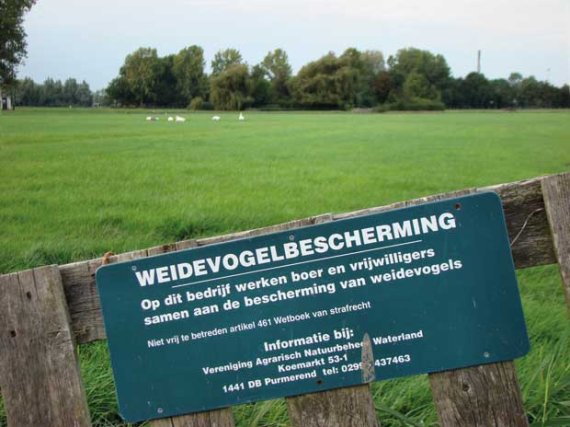This is shown by research done by Wageningen economist Roel Jongeneel. Meanwhile, political reality has caught up with this study, as state secretary Henk Bleker has stopped the purchase of land for nature to meet the cabinet’s cost-cutting objectives. But when Jongereel started his research project three years ago, it was a taboo to discuss the costs of the EMS, he says.
Managment contracts
What makes the purchase of land for nature expensive? Jongeneel calculated that the increase in demand can push land prices up by about 20 percent. ‘This has been denied for a long time, but buying 100,000 hectares of farmland will lead to price increases.’ In addition, nature purchases involve transaction costs which have not been calculated in before. ‘Government officials have a lot to do before the EMS policy can be translated into a legal transaction’, explains Jongeneel. ‘There are also costs incurred for the spatial planning and monitoring of nature objectives.’ Although transaction costs are also involved In management contracts with farmers, these are lower.
Bleker
‘Each hectare of EMS nature costs the country 867 euros per year. You have to take all this into account. If you decide to concentrate on agricultural nature management, you end up with almost 240 euros less in costs.’ If the government continues to buy EMS land to implement the original plan, it will cost the treasury 9.1 billion euros. If the government reduces its purchases and enters into more management contracts with farmers instead, the costs will be 6.6 billion euros. Jongeneel bases these calculations on the assumption that nature objectives remain broadly the same. Without any extra agricultural nature management, the total costs will fall to about 6.2 billion euros. ‘But then the nature objectives will of course be jeopardized’, says Jongeneel. His results were published this month in Land Use Policy. The research appears to provide support for Bleker’s policy; he recently stopped buying land for the EMS. But it is too soon to say that, says Jongeneel. The policy is now going to the other extreme, he feels. ‘Bleker has even removed the robust corridors, even though these are important from nature’s point of view.’

